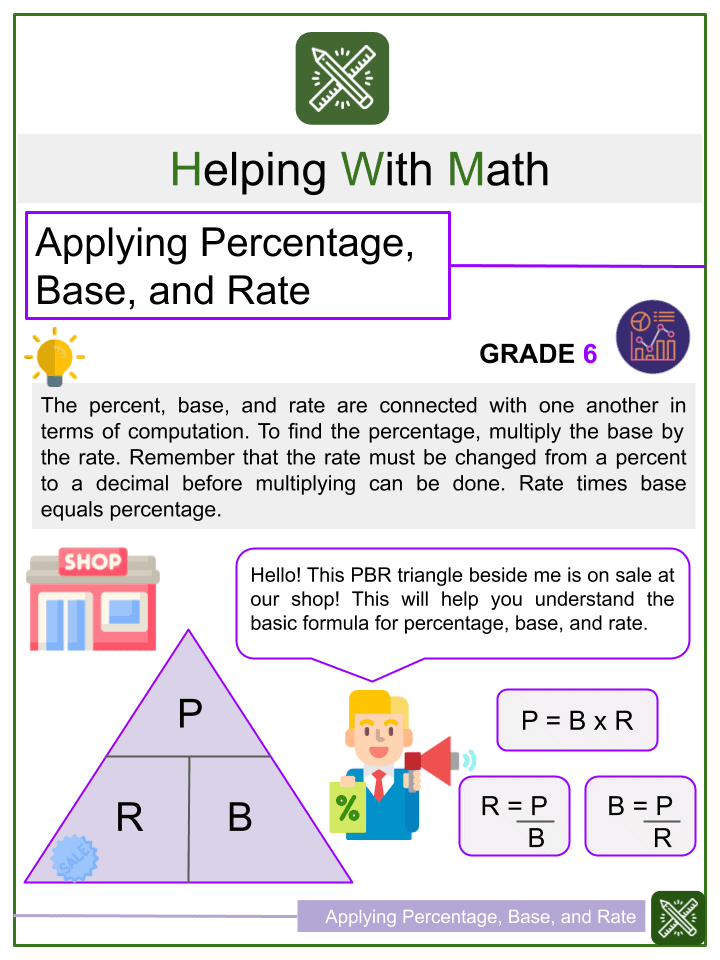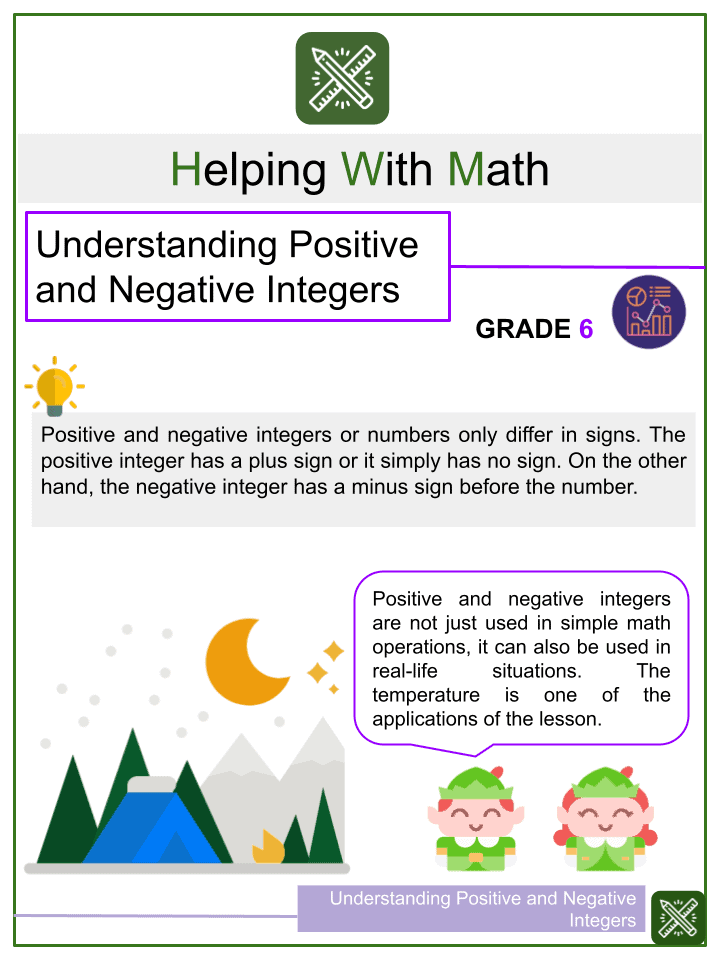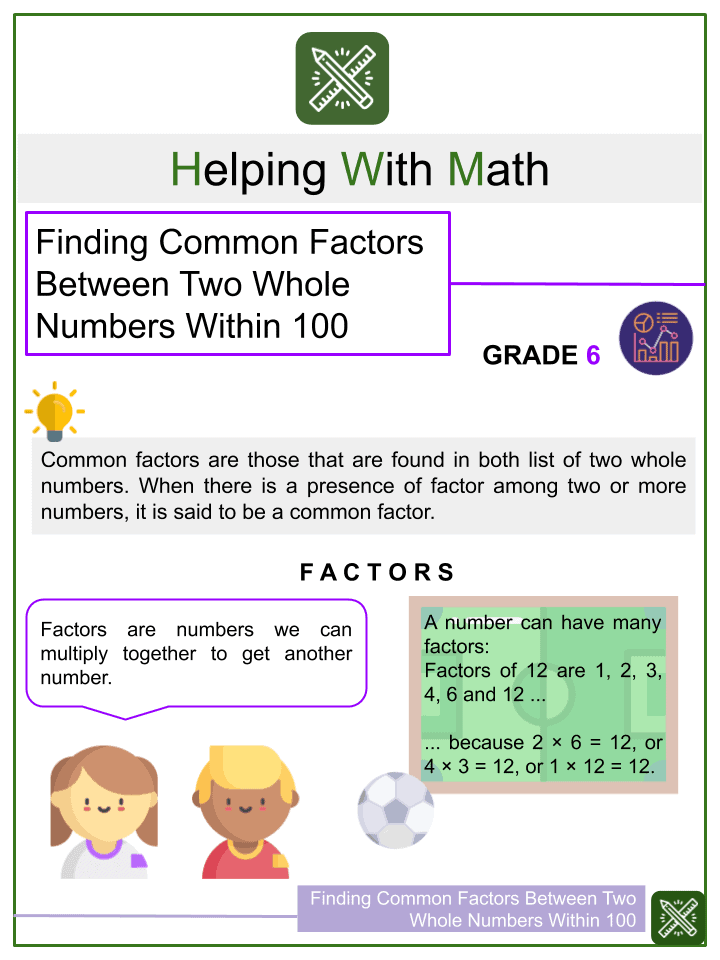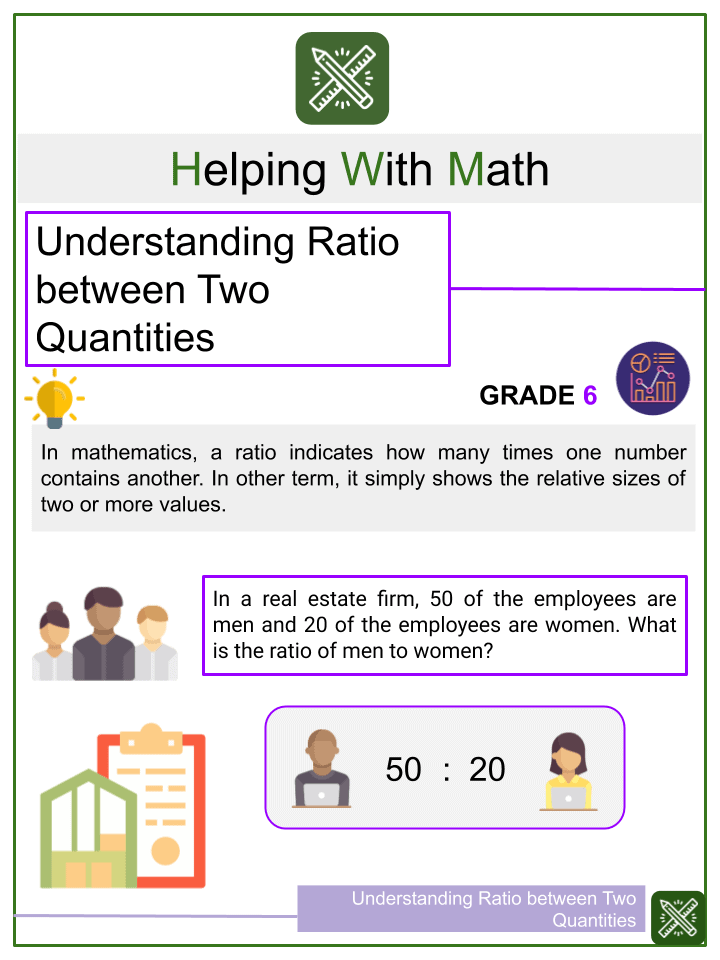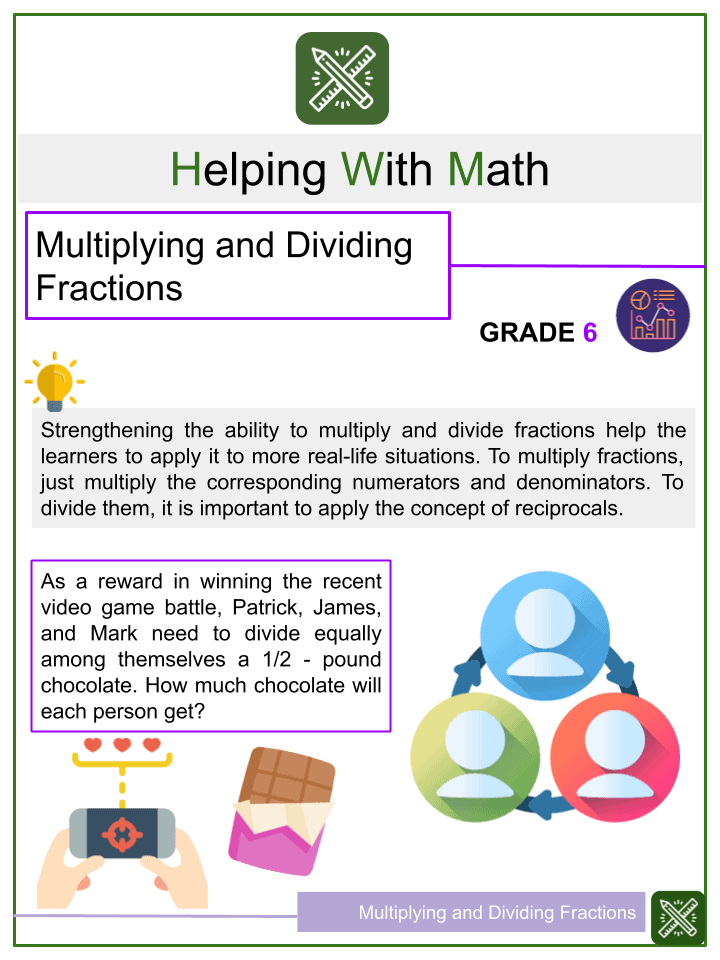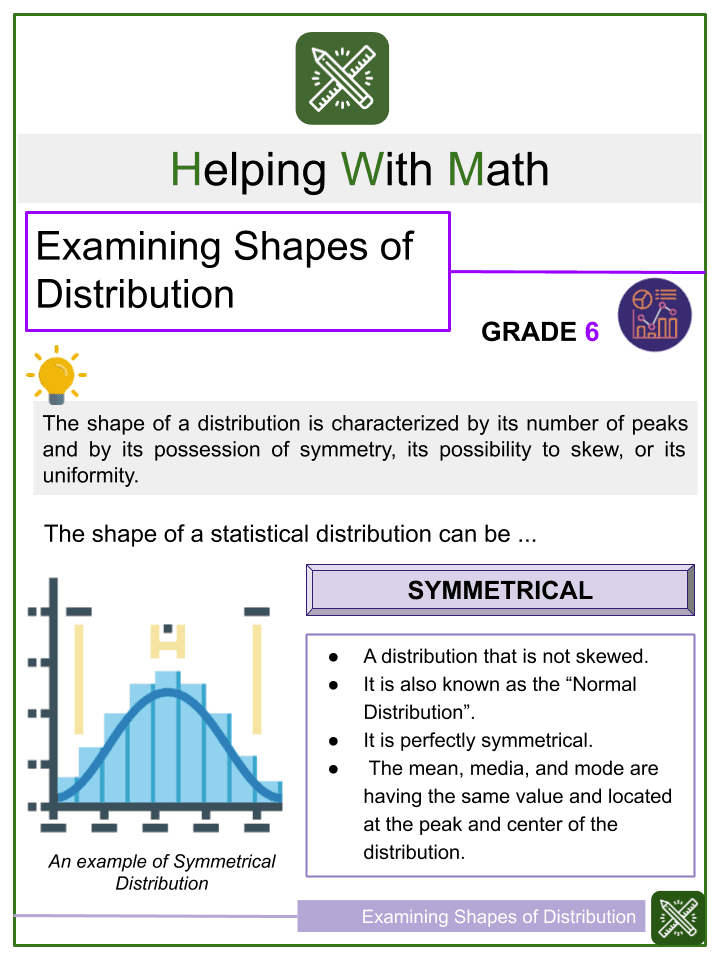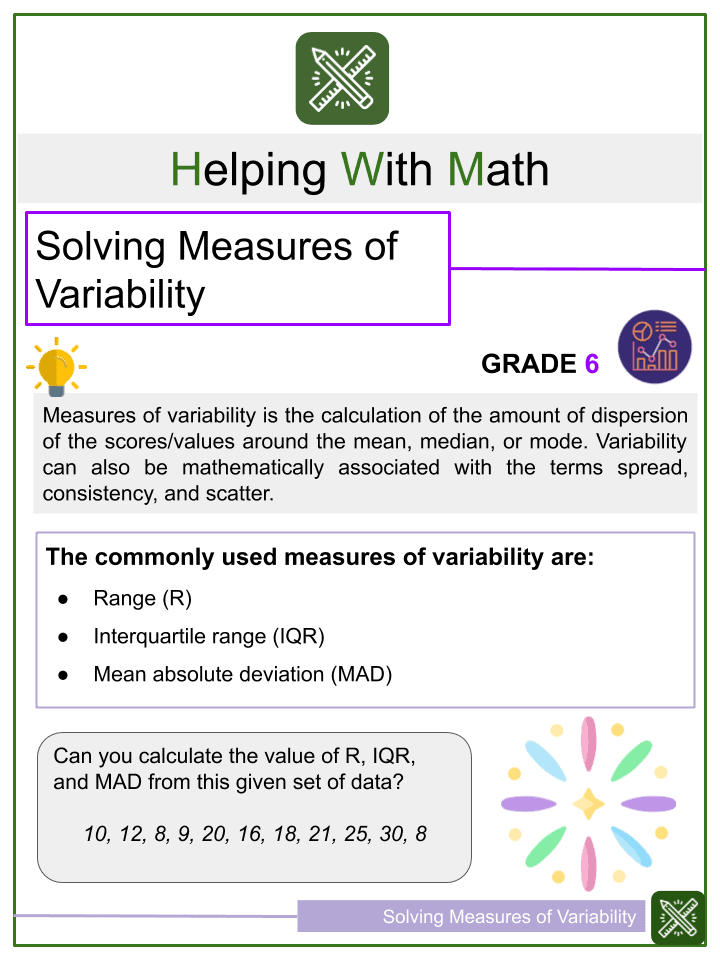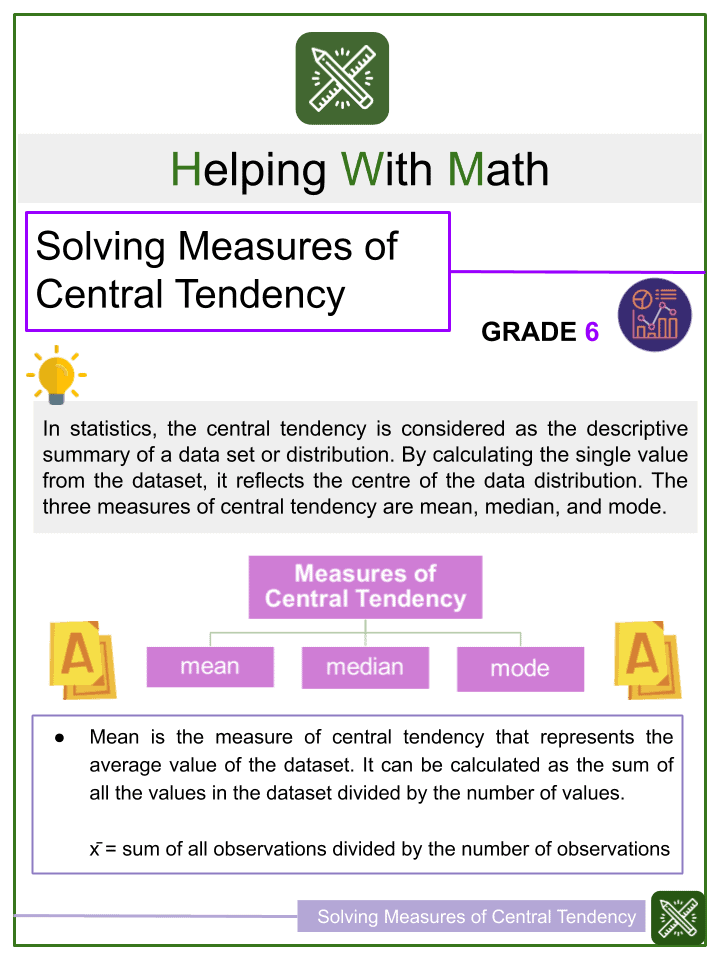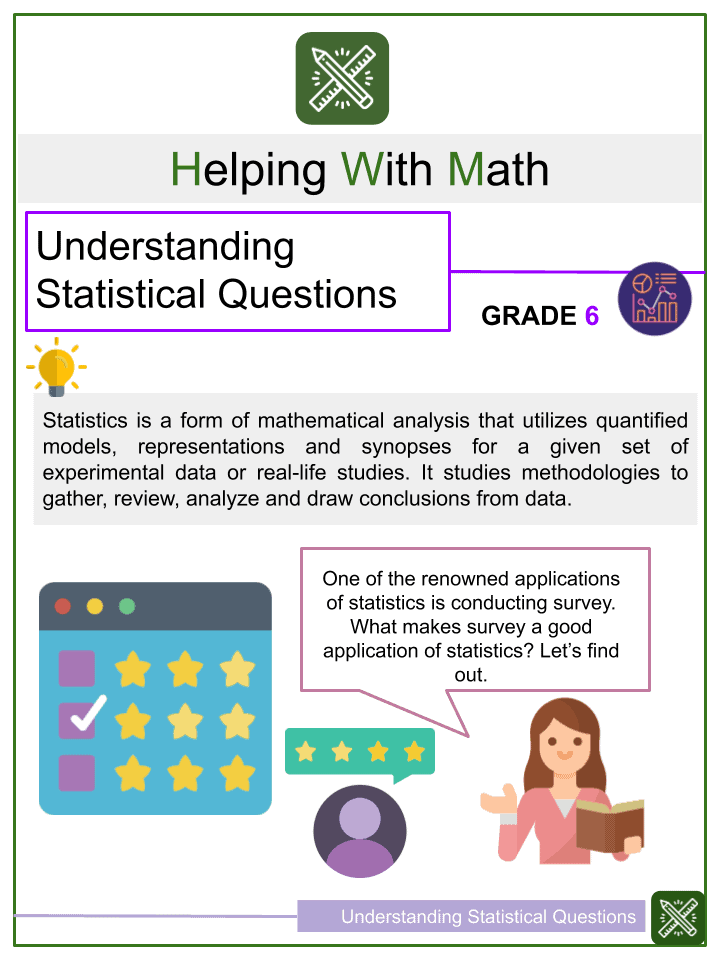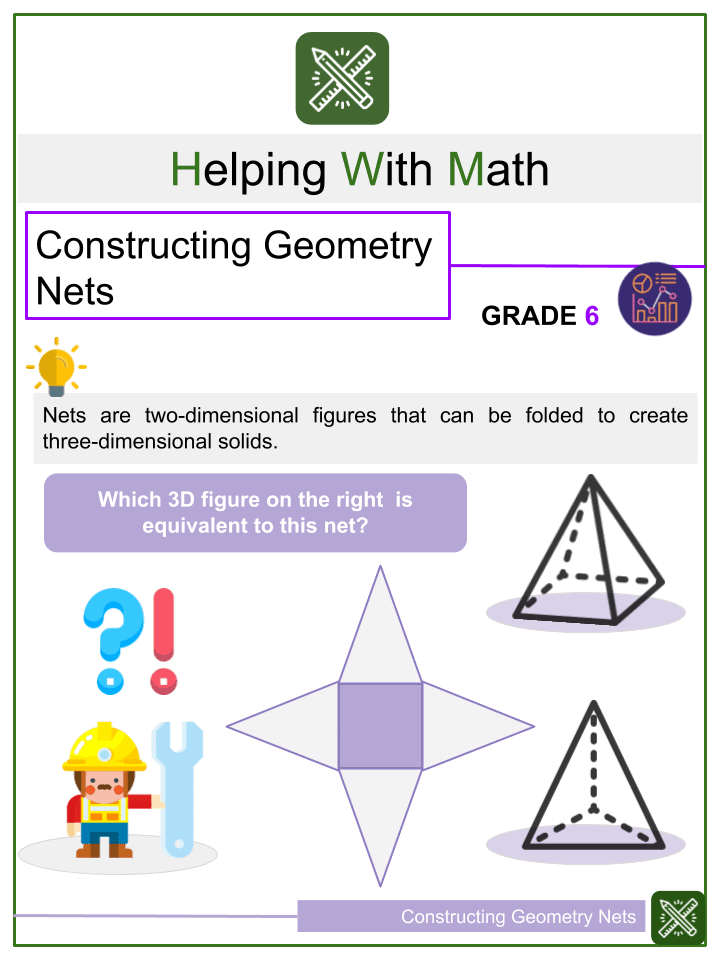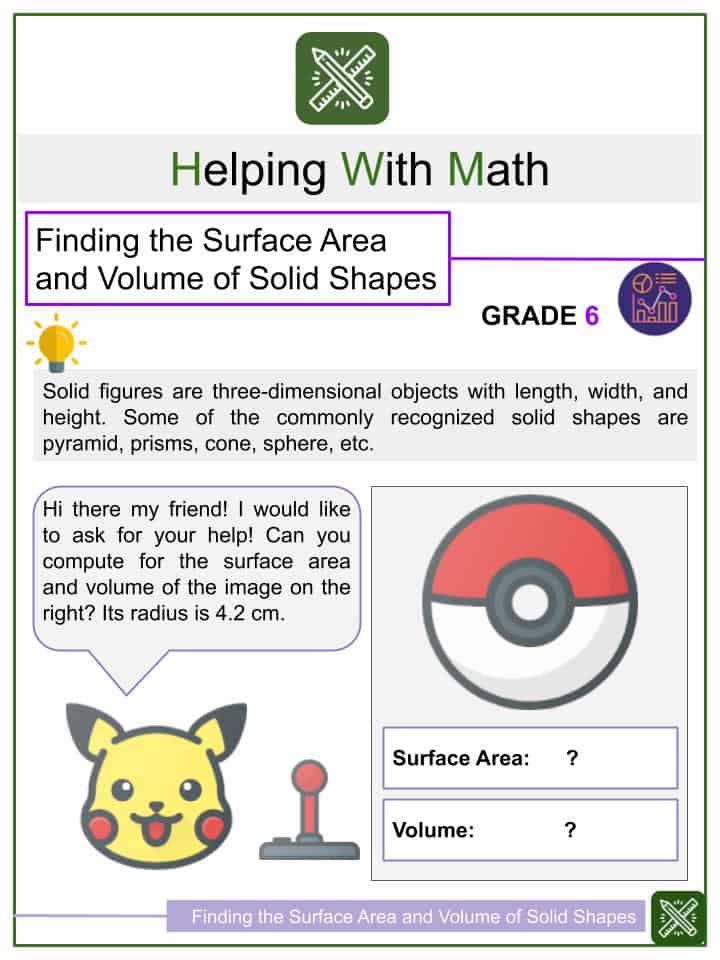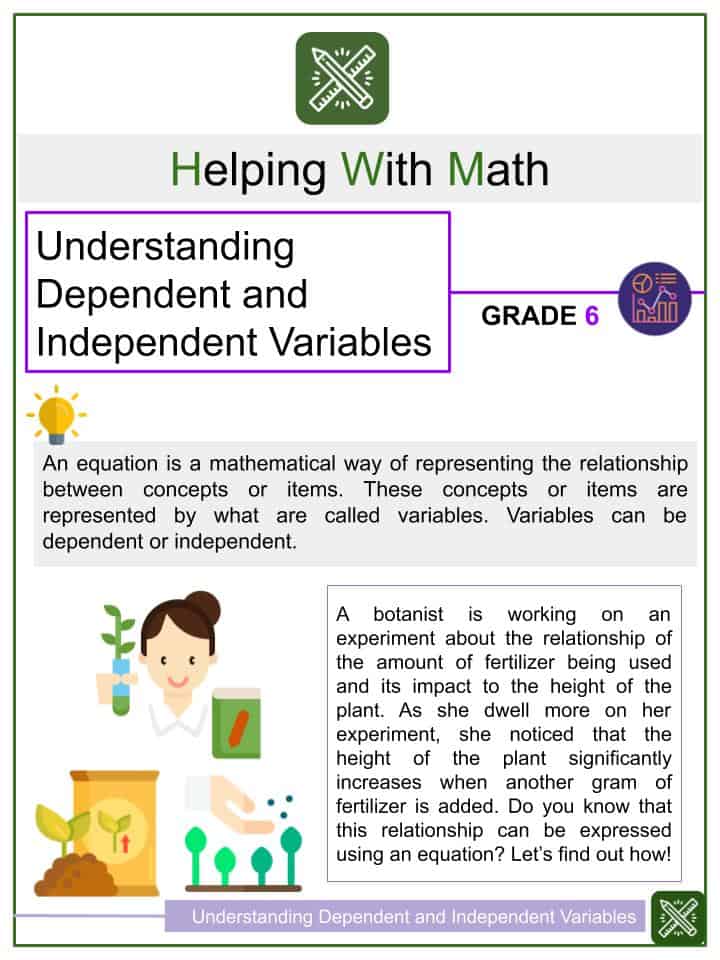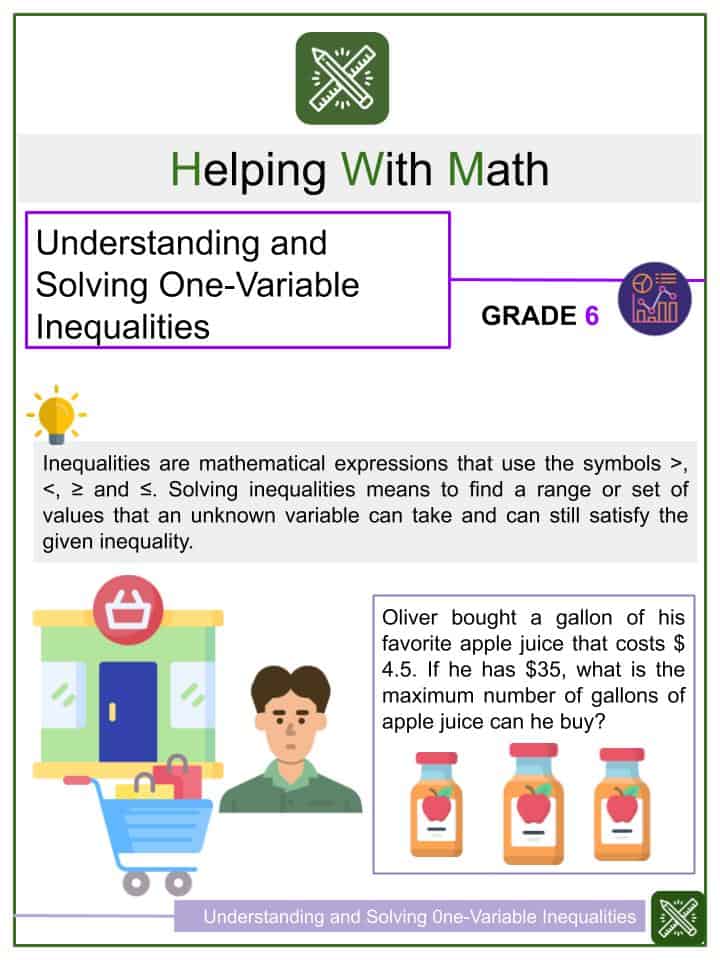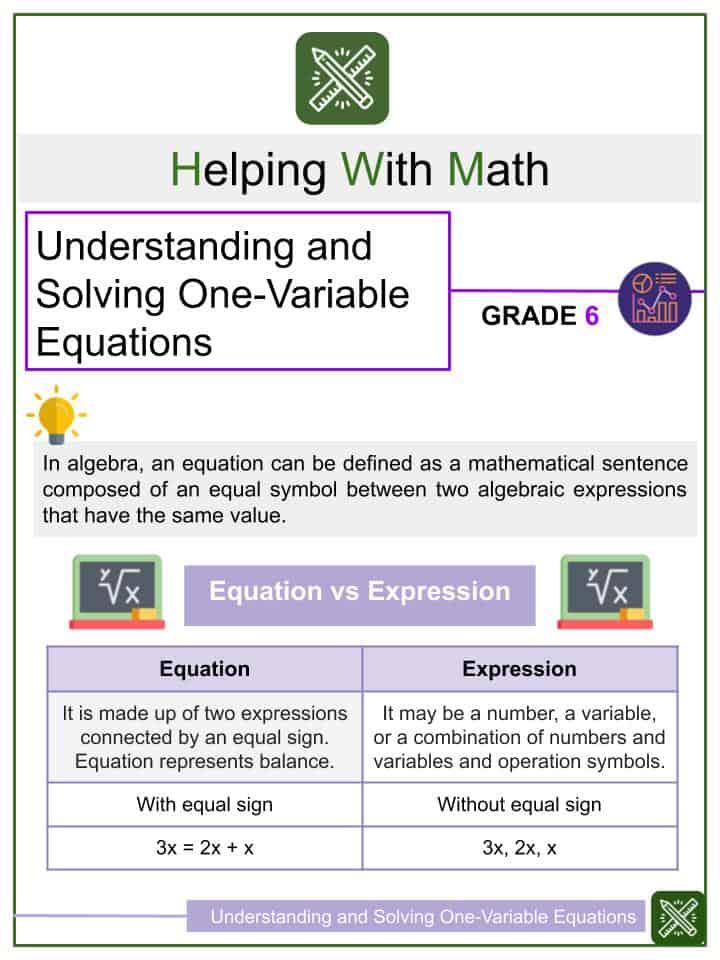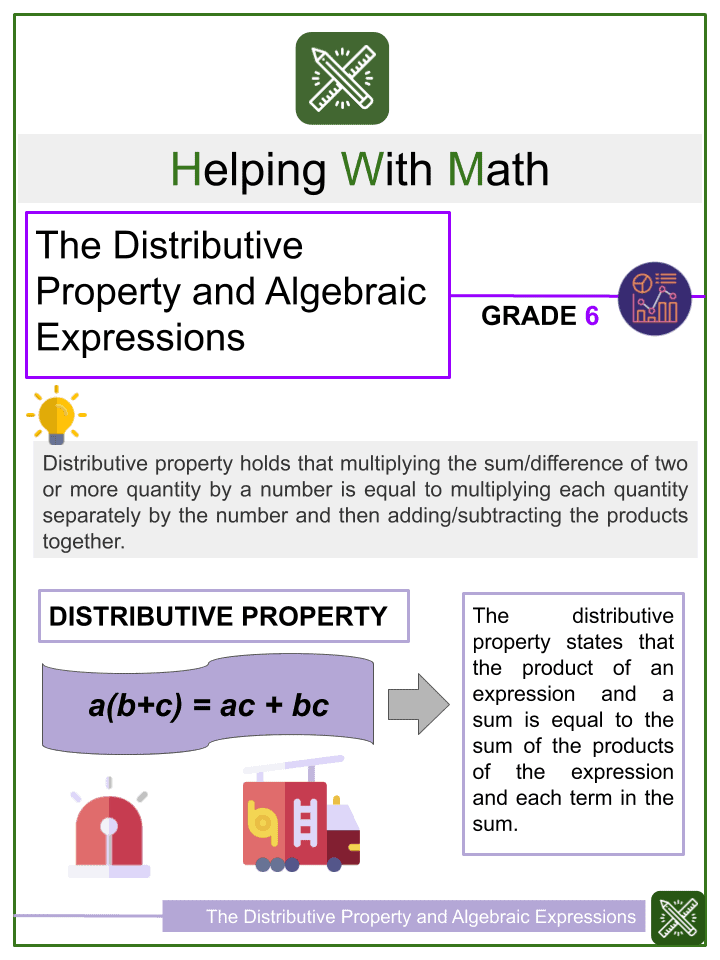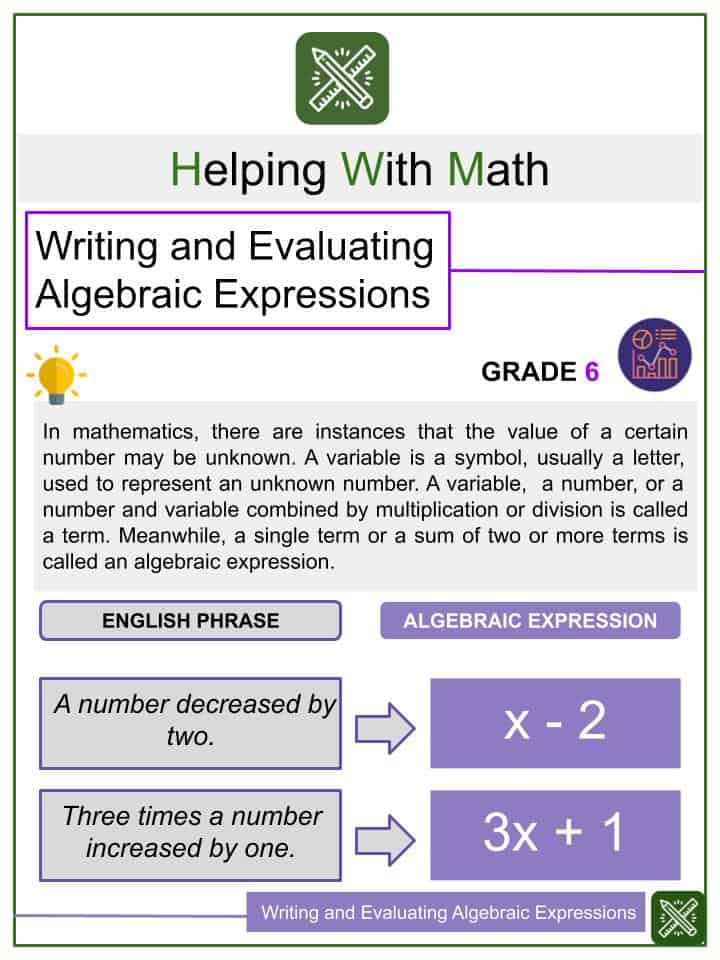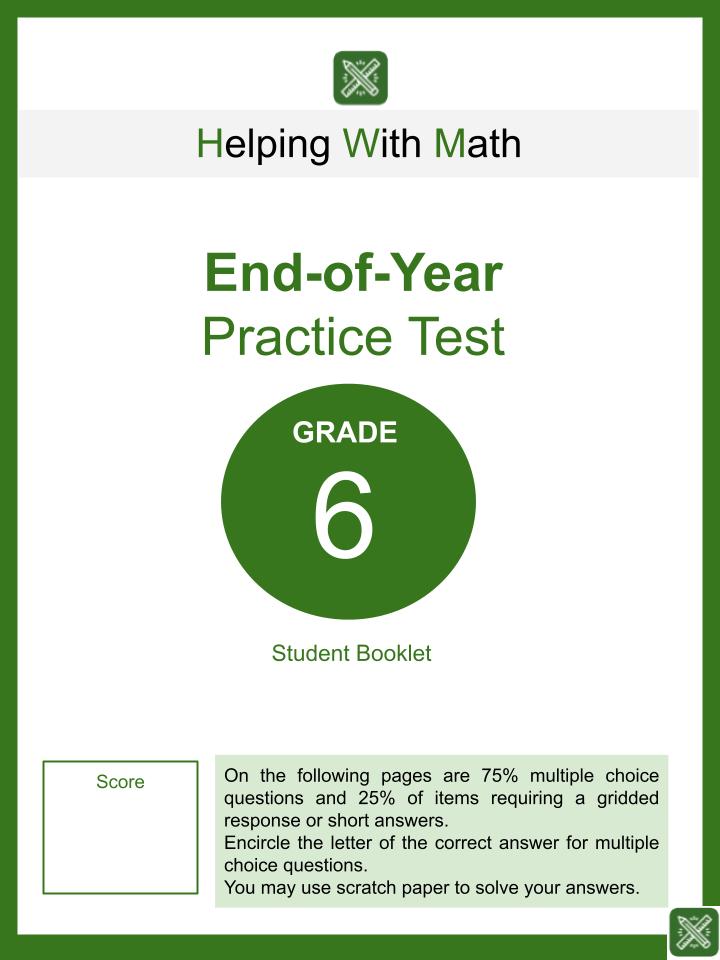6th Grade Math Worksheets
In this section, you can view all of our sixth-grade math worksheets and resources. These include common-core aligned, themed and age-specific worksheets. Perfect to use in the classroom or homeschooling environment.
We add dozens of new worksheets and materials for math teachers and homeschool parents every month. Below are the latest grade 6 worksheets added to the site.
6th Grade Common Core Aligned Learning Objectives & Standards:
Learning objectives:
In Grade 6, instructional time should focus on four critical areas:
(1) relating ratio and rate to whole number multiplication and division and applying the basic concepts of ratio and rate to solve problems;
(2) showing mastery of division of fractions and extending the set of number to the system of rational numbers, which includes negative numbers;
(3) writing, interpreting, and using expressions and equations; and (4) developing understanding of statistical thinking.
a. Conceptual skills
- Learners provide acceptable reasons about multiplication and division in solving ratio and rate problems about quantities. They make use of their understanding of multiplication and division with ratios and rates by assuming equivalent ratios and rates as deriving from, and extending, pairs of rows (or columns) in the multiplication table, and by analyzing simple drawings that indicate the relative size of quantities.
- Learners connect the meaning of fractions, the meanings of multiplication and division, and the relationship between multiplication and division to explain the logical solution for dividing fractions. In that way, they use these operations to solve problems.
- 6th graders broaden their schema of numbers and the ordering of numbers to the full system of rational numbers, which includes negative rational numbers, and in particular, negative integers.
- They explain the concepts behind the order and absolute value of rational numbers and about the location of points in all four quadrants of the coordinate plane.
- They will have initial understanding of statistical concepts such as measures of central tendency and measures of variability. They recognize that these concepts can also be useful for summarizing data because two very different sets of data can have the same mean and median yet be distinguished by their variability.
- They also learn to describe and summarize numerical data sets, identifying clusters, peaks, gaps, and symmetry, considering the context in which the data were collected.
b. Procedural skills
- Learners go beyond the scope of problems about ratios for which they can use multiplication and division related to ratios and fractions to solve problems.
- They apply the concepts of variables in mathematical expressions. In that way, they will be able to write expressions and equations that correspond to given situations, evaluate expressions, and use expressions and formulas to solve problems. Learners acknowledge the fact that expressions in different forms can be equivalent, and they apply the properties of operations to rewrite expressions in equivalent forms.
- Learners will practice the learned concepts about equations and inequalities by solving for the solution set that will make the equations or inequalities true. They make use of the properties of operations and the idea of maintaining the equality of both sides of an equation to solve simple one-step equations.
- Students construct and analyze tables, such as tables of quantities that are in equivalent ratios, and they use equations (such as 2x = y) to describe relationships between quantities.
- They solve for the areas of right triangles, other triangles, and special quadrilaterals by decomposing these shapes, rearranging or removing pieces, and relating the shapes to rectangles.
- Learners will be able to discuss, develop, and justify formulas for areas of triangles and parallelograms. They extend their understanding of surface area and volume of solid figures such as prisms, pyramids, cylinders, etc.
c. Life skills
- As the coordinate plane is fully discussed in 6th grade, learners would be able to understand how important finding accurate location is. Given its wide applications in using maps, GPS, longitude, latitude, etc, learners appreciate more the meaning of their lessons in the real world.
- Statistics help the 6th graders to make sound decisions, conclusion, prediction, and inferences based on numerical data or trends.
- Students in Grade 6 also design community projects by integrating the relationships among shapes to determine area, surface area, and volume.
- They prepare for work on scale drawings and constructions in Grade 7 by drawing polygons in the coordinate plane.
